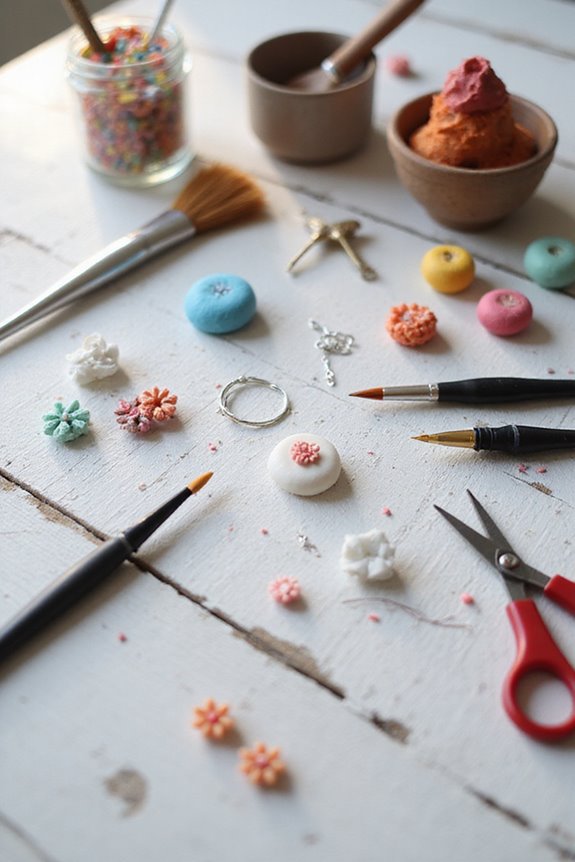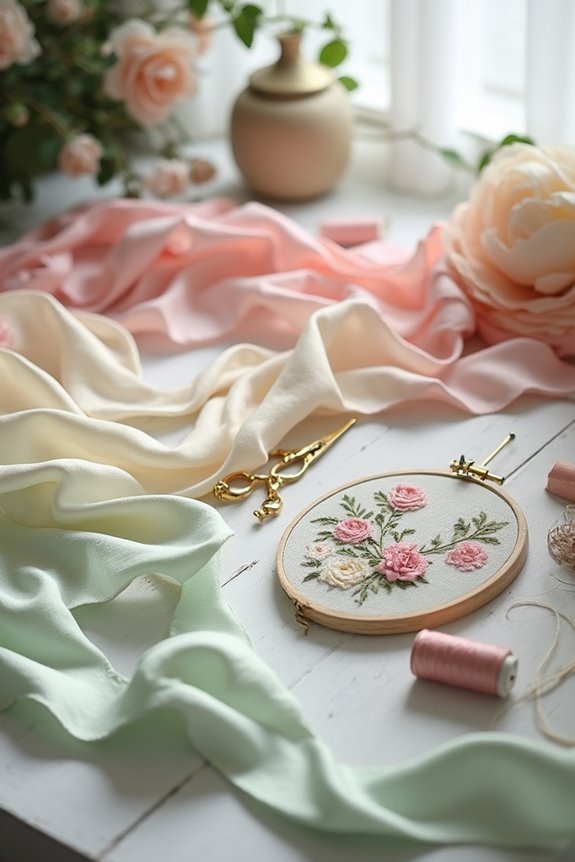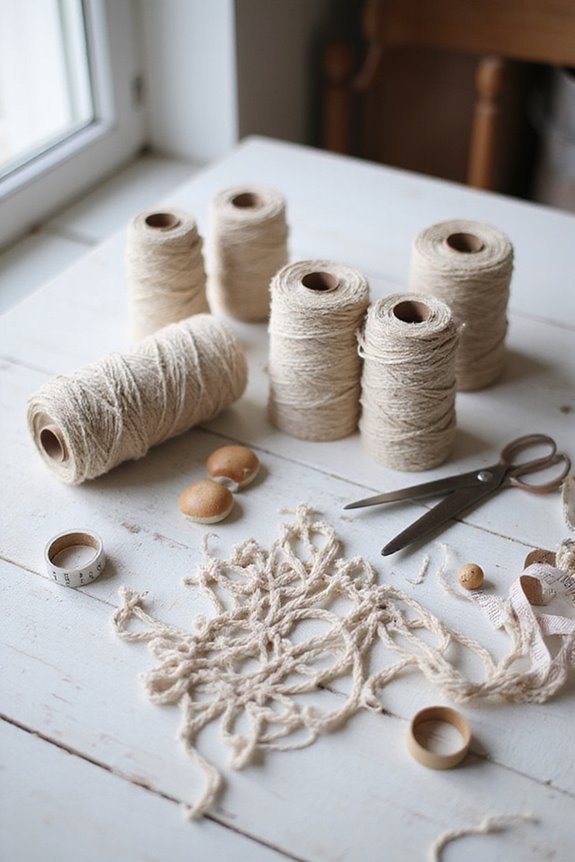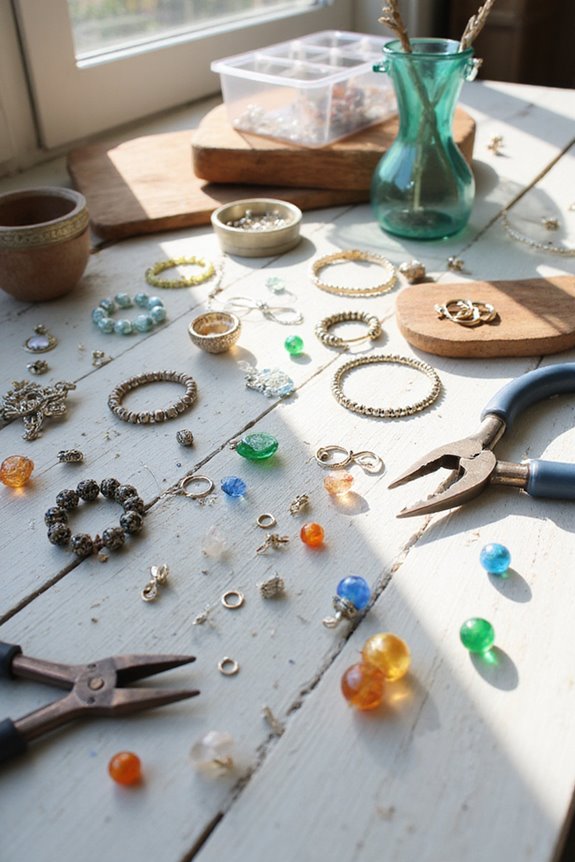When we craft miniatures, choosing the right materials is essential for both detail and durability. 🌳 Start with basswood for intricate designs or balsa wood for lighter projects. For adhesives, consider water-based pastes for repositioning and super glue gel for quick fixes. 🎨 Acrylic paints dry fast and offer vibrant colors, while thicker cardstock supports structures well. Use precision tools like X-Acto knives and steel rulers for accuracy. 📏 Keep going to discover more fascinating material options for your miniatures!
Key Takeaways
- Wood: Basswood and balsa wood are excellent choices for crafting due to their strength and ease of manipulation for intricate designs.
- Adhesives: Use water-based paste or quick-grab tacky glues for effective bonding of delicate materials and components.
- Paints: Fast-drying acrylic paints are versatile for coloring projects, while enamel paints offer durability for finished miniatures.
- Paper and Cardstock: Thick cardstock provides structural support and can create realistic effects with various textures for miniature projects.
- Tools: Precision cutting tools and measuring instruments are essential for accuracy, enabling detailed design and assembly of miniatures.
Wood Materials
When it comes to miniature crafts, wood materials are often our go-to choice for creating detailed and sturdy projects. 🪵 We can’t underestimate the importance of selecting the right type of wood, as it affects not just the look of our miniatures but also how they hold up over time.
Basswood, for instance, offers several advantages—it’s strong, easy to cut, and perfect for intricate designs like dollhouse furniture. Balsa wood, while lightweight and beginner-friendly, is primarily used for simpler, lighter miniature projects. Additionally, using adjustable temperature settings can enhance the precision of your wood burning techniques when adding details to your miniatures.
Here are a few key points:
- Basswood: 1/16-inch and 1/8-inch thickness, great for durability.
- Balsa Wood: Best for light, delicate structures.
Choose wisely for lasting miniatures!
Adhesives and Glues
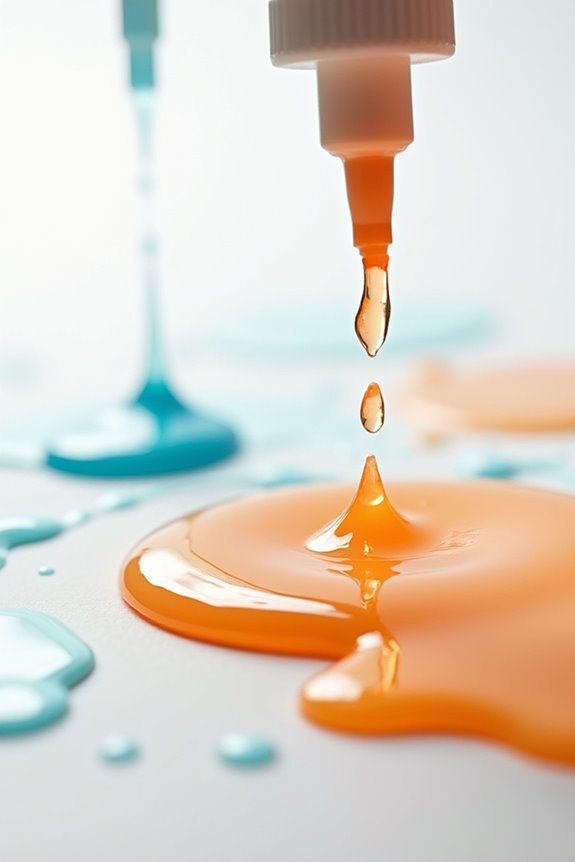
Choosing the right adhesives and glues is essential for the success of our miniature crafts. Each adhesive type has unique properties suited for different materials and projects.
- Water-Based Paste Adhesives: Perfect for delicate materials like wallpaper. It dries clear and lets us reposition items easily. 🛠
- Quick-Grab Tacky Glues: They bond fast, ideal for wood, paper, and plastic. Use toothpicks for precise glue application to avoid mess.
- Craft Bond & Super Glue Gel: Both are strong but serve different purposes. Use Craft Bond for flexibility and detail with Super Glue Gel for quick fixes on small parts.
- PVA & Glue Sticks: Both are non-toxic and reliable for structure and decoration. Easy cleanup makes them beginner-friendly! 🖌
With these tips, our crafts will stick just right! Additionally, considering safety features can help ensure that our crafting experience remains secure and enjoyable.
Paints and Finishes
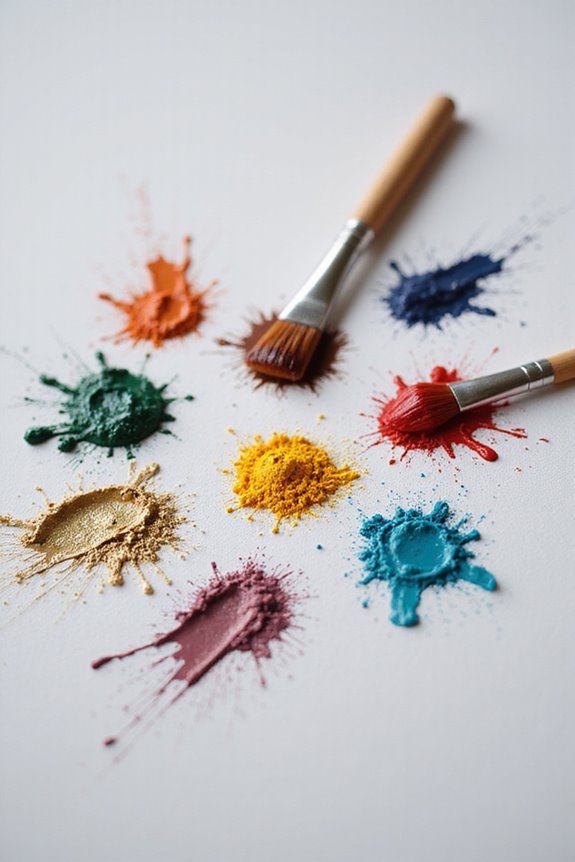
In the world of miniature crafting, paints and finishes play an essential role in bringing our creations to life. 🖌 Whether we’re adding color to a dollhouse or detailing a miniature model, the right paint can enhance both appearance and durability.
For ideal results, consider acrylics for their fast drying times and ease of color mixing. Plus, they come in various finishes! Remember to apply multiple coats for full coverage. Enamel paints, while durable, have longer drying times.
Don’t forget primers and sealers; they help protect our work. A semi-gloss finish is easier to clean, while specialty effects like crackle will add character. By experimenting with different paint techniques, we’ll find what works best for our unique miniatures! 🎨✨ Additionally, using non-toxic, water-based formulas ensures a safer crafting experience, especially for beginners and children.
Paper and Cardstock
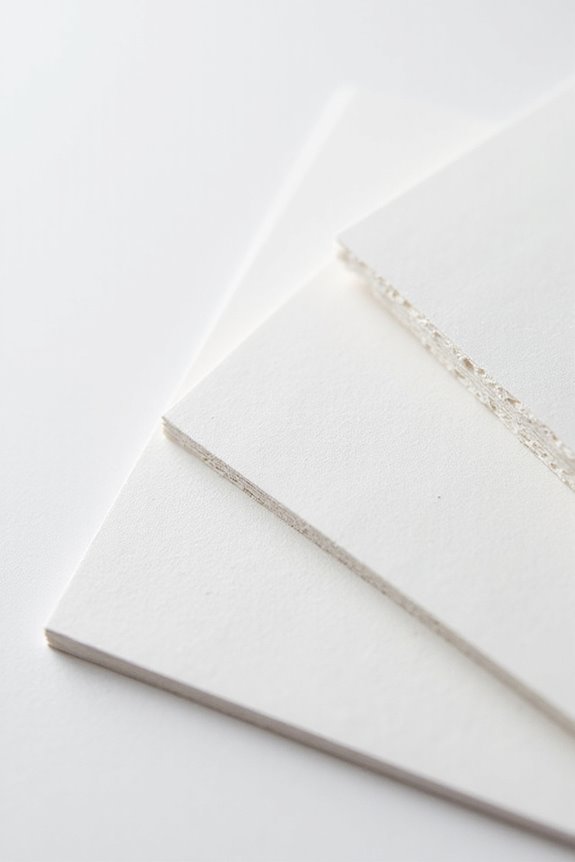
Paper and cardstock are essential materials in our miniature crafting toolkit, offering versatility and depth to our projects. 📝 They come in various types, allowing us to create a range of effects and finishes. For instance, we often choose thicker cardstock for its durability—ideal for structures needing support.
When selecting paper textures, consider linen or canvas to simulate realistic surfaces. Common cardstock finishes include glossy, matte, and textured.
Here are some practical uses:
- Create miniature posters or wall art with scrapbook paper designs.
- Layer cardstock for 3D effects or detailed embellishments.
- Use patterned cardstock with small prints to enhance realism.
Additionally, incorporating vintage scrapbook paper packs can elevate your miniature projects with unique designs and high-quality materials. Don’t forget to recycle scraps into smaller decorative elements, maximizing our material use!
Tools for Crafting Miniatures

When we immerse ourselves in miniature crafting, the right tools can make all the difference in our projects. 🛠 Having a set of precision cutting tools, adhesives, and measuring instruments at hand allows us to achieve professional results with ease.
For cutting, we recommend X-Acto knives for detailed cuts, along with small scissors and wire cutters for finer tasks. We shouldn’t overlook measuring tools like steel rulers and calipers, which guarantee accuracy in our designs. Additionally, having a comprehensive set of tools like jewelry pliers can enhance our ability to manipulate smaller components effectively.
Using tacky glue or super glue helps secure our pieces, while toothpicks make applying adhesive easier without mess.
Miscellaneous Materials
As we explore our miniature crafting projects, having a variety of materials on hand can elevate our creations to a new level. 🛠 From clays that mold into intricate shapes to wood forming the backbone of our structures, understanding these miscellaneous materials is key.
- Bead embellishments can serve as knobs, levers, and other fine details, adding realism to our miniatures.
- Eye pin accents provide flexible metal links, enhancing mechanical movement and overall design.
Additionally, sandpaper smooths surfaces to perfection, while tiny nails and screws guarantee durability. For decorative finishes, wood burning and staining supplies add character. Combining these elements elevates our miniature work, allowing for creativity and precision in every detail. Let’s get crafting!
Frequently Asked Questions
What Type of Lighting Is Best for Working on Miniatures?
For working on miniatures, we recommend LED options for energy efficiency and minimal heat. Natural light helps us see true colors easily, making our intricate details pop while reducing eye strain during those long crafting sessions.
How Do I Store Miniature Materials to Prevent Damage?
To store miniature materials and guarantee preservation, we can explore various storage solutions like clear pouches and stackable bins, safeguarding our supplies while making organization visually pleasing and accessible—keeping everything safe from damage and easily identifiable.
What Safety Precautions Should I Take While Crafting?
While crafting, we should always wear safety gear and handle crafting tools carefully. Maintaining an organized workspace and following safety guidelines helps us prevent accidents and guarantees enjoyable, creative experiences without unnecessary risks.
How Can I Display My Finished Miniature Projects Effectively?
We can transform our miniature creations into genuine treasures by exploring various display options. Utilizing creative backdrops adds depth and charm, making each piece feel appreciated. Let’s celebrate our hard work with enchanting presentations!
Are There Any Online Communities for Miniature Crafting Enthusiasts?
There’re numerous online miniature forums and crafting groups where we can share tips, showcase our projects, and connect with fellow enthusiasts. It’s a great way to learn and inspire each other in our miniature journeys!

